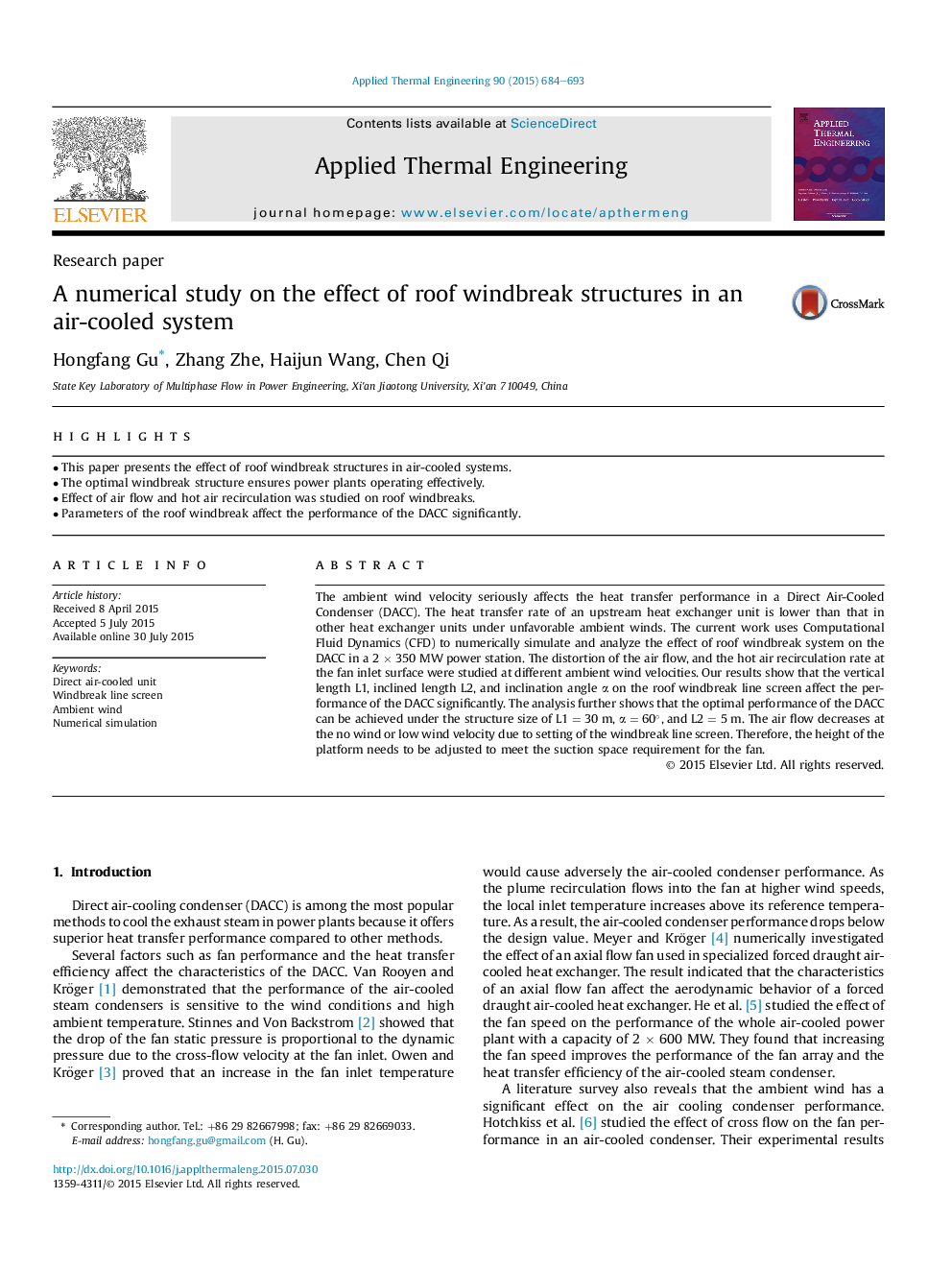| Article ID | Journal | Published Year | Pages | File Type |
|---|---|---|---|---|
| 7048877 | Applied Thermal Engineering | 2015 | 10 Pages |
Abstract
The ambient wind velocity seriously affects the heat transfer performance in a Direct Air-Cooled Condenser (DACC). The heat transfer rate of an upstream heat exchanger unit is lower than that in other heat exchanger units under unfavorable ambient winds. The current work uses Computational Fluid Dynamics (CFD) to numerically simulate and analyze the effect of roof windbreak system on the DACC in a 2 Ã 350 MW power station. The distortion of the air flow, and the hot air recirculation rate at the fan inlet surface were studied at different ambient wind velocities. Our results show that the vertical length L1, inclined length L2, and inclination angle α on the roof windbreak line screen affect the performance of the DACC significantly. The analysis further shows that the optimal performance of the DACC can be achieved under the structure size of L1 = 30 m, α = 60°, and L2 = 5 m. The air flow decreases at the no wind or low wind velocity due to setting of the windbreak line screen. Therefore, the height of the platform needs to be adjusted to meet the suction space requirement for the fan.
Keywords
Related Topics
Physical Sciences and Engineering
Chemical Engineering
Fluid Flow and Transfer Processes
Authors
Hongfang Gu, Zhang Zhe, Haijun Wang, Chen Qi,
